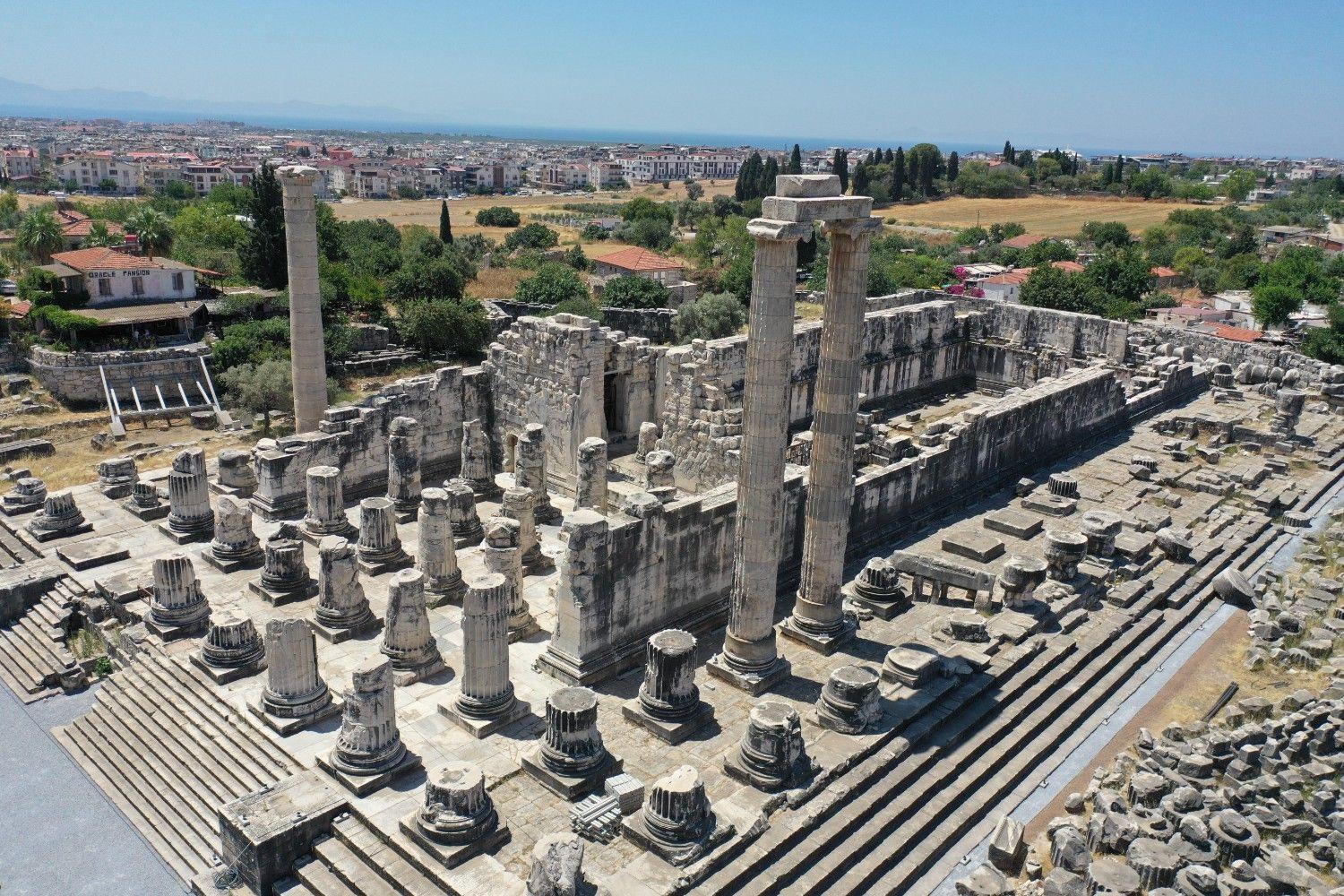
The monumental Apollon Temple in the western province of Aydın’s touristic Didim district — once the ancient world’s revered “center of prophecy” — is set to welcome visitors after dark as part of Türkiye’s night museum initiative.
The historic site is being adapted for evening visits with special lighting and newly completed walkways. Built in the Ionic style and considered the third largest temple of its kind in the ancient world, the Apollon Temple has been the focus of archaeological work since 1905, first by German teams and now under the leadership of the Milet Museum Directorate.
Its inclusion in the Culture and Tourism Ministry’s “Heritage for the Future” program has brought renewed attention and resources to the site. “About seven months of intensive effort has gone into this,” Milet Museum Acting Director Arife Aslan said. “The walking paths are completed, only the staircase remains. The welcome center will be ready within two or three weeks.”
Currently drawing between 130,000 and 150,000 visitors annually, the site is expected to see increased traffic with the new nighttime opening.
Lighting elements designed to highlight the temple’s scale and details are in their final stages. “Apollon Temple is always magnificent,” Aslan said. “But the lighting, it will take on an entirely new atmosphere. One of the rare colossal structures still standing today, the temple will now offer visitors a more immersive experience.”
The site was a major center of prophecy. “We know from inscriptions that figures like the Pharaoh of Egypt, the Lydian King Croesus and Persian rulers sought guidance from Didymaean oracles before major decisions,” Aslan explained. Even Pharaoh Necho is said to have donated his armor here.”
8,000-seat theater in Letoon Sanctuary to be restored
Meanwhile, further south in Muğla’s Seydikemer district, the ancient Letoon Sanctuary — recognized by UNESCO and considered the spiritual heart of the Lycian League — is undergoing its own restoration. Excavations led by Hasan Kasapoğlu of Atatürk University are focusing on bringing the site’s theater and the Temple of Leto back to life. Aided by digital mapping of 3D modeling.
“The theater had a capacity of around 8,000 and hosted sacred festivals,” Kasapoğlu said. “With the support of the ‘Heritage for the Future’ Project, we’re working to make it functional again while preserving its authenticity.”
A trilingual inscription discovered at the site in 1973 — written in Lycian, Aramaic and Greek — was pivotal to Letoon’s inclusion in the World Heritage list. Combined with Xanthos nearby, the area is being positioned as a key destination for cultural tourism, with plans to open it for nighttime visits once restoration is complete.
“Letoon lies along the Lycian Way and already attracts many international visitors, Kasapoğlu noted. “Bringing these sacred structures back into public view — both day and night — will not only deepen appreciation for the region’s ancient past but also contribute to local tourism and the broader economy.”